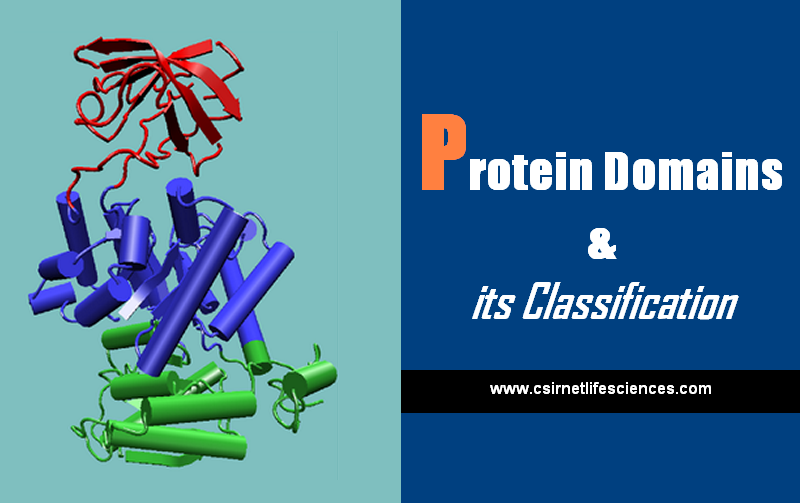
When discussing protein fold, we first need to identify the folding unit. Such unit is called a protein domain. This means that when we mention fold classification, we actually mean PROTEIN DOMAIN CLASSIFICATION. Protein domains are the basic building blocks of a protein, Structural Organization of Proteins, and they are also the basic evolutionary unit of any structure. Of course, a protein may consist of a single domain or may be a multi-domain protein.
- Ramachandran Plot : Polypeptide chain conformation
- Deoxyribonucleic acid its Types : A-DNA, B-DNA and Z-DNA
- Isoenzymes are Special Proteins with Catalytic activity. Why? (MCQ)
What is Protein Domains?
A protein domain is a part of protein sequence and structure that can evolve, function, and exist independently of the rest of the protein chain. Each domain forms a compact three-dimensional structure and often can be independently stable and folded.
Many proteins consist of several structural domains. One domain may appear in a variety of different proteins. Molecular evolution uses domains as building blocks, and these may be recombined in different arrangements to create proteins with different functions. Domains vary in length from between about 25 amino acids up to 500 amino acids in length.
The shortest domains such as zinc fingers are stabilized by metal ions or disulfide bridges. Domains typically create functional units, such as the calcium-binding EF hand domain of calmodulin. Because they are independently stable, domains can be “swapped” by genetic engineering between one protein and another to make chimeric proteins.
Certain protein domains have some function associated with them, like the Rossmann-type domain, also called coenzyme-binding domain, shown on the previous page. They “carry” this function with them when they get inserted into different proteins during evolution.
Characteristics of Protein Domains:
A domain may be characterized by the following:
- A spatially separated unit of the protein structure
- May have sequence and structural resemblance to another protein’s Domain Structure or domain.
- May have a specific function associated with it.
To characterize the folding of protein domains, we need to discuss the details of fold classification: How folds are defined by different databases, what are the relationships between a fold and the protein family, etc.
Protein Domains Classification:
For Protein domain classification, we usually have to follow the scheme: (based on Protein Structure Function and Classification)
- Assignment of secondary structure.
- Assignment of independent folding units: Domains.
- Assignment of a structural class.
- Assignment of fold (also called architecture).
- Assignment of topology (super family) Secondary structure is usually assigned automatically, using some specific computer programs. For example, most of the protein structure visualization programs will do it, and typically all PDB files contain secondary structure assignment.
